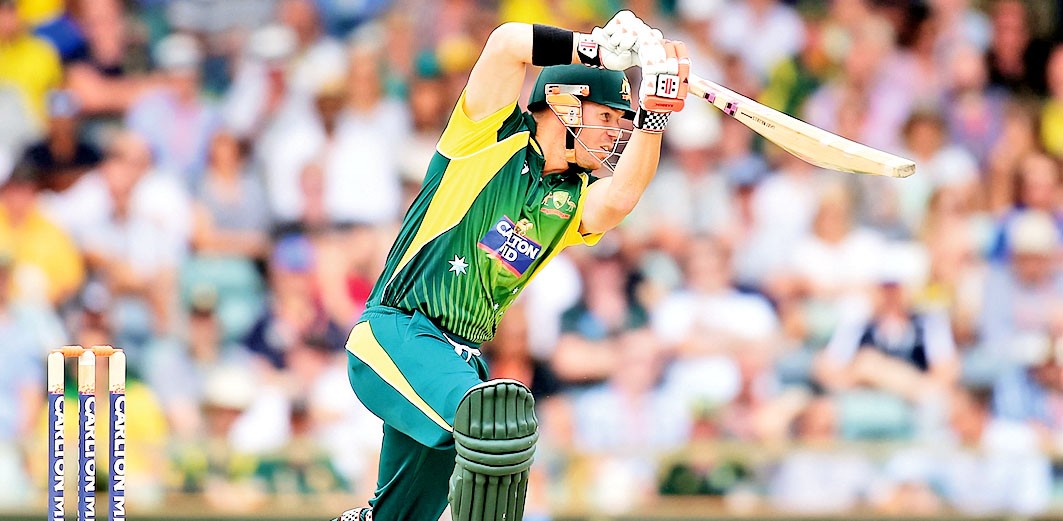

The balance is skewed too far in favour of batsmen already. Cricket cannot afford for bats to get an.
From the old Signature brand, through to the Magnum, Scoop and Jumbo, to the modern-day Kaboom: as with much else, it seems evolution is a given when it comes to cricket bats. We now are experiencing the Everest moment, the period when the technology and craft behind the batsman’s tool of trade is at its absolute peak.
The manufacturer has produced a lethal weapon that authorities now need to rein in. Simple reason: the grounds, much like golf courses around the world, are struggling to contain the ball in the field of play. Sixes are struck now with ease. Mishits for the maximum are common. The bowler is at his wit’s end. Any more grand technology to the bat and the game will become alien. So let’s take Kaboom and use that as the limit.
What do we limit? We have a limit to the width, which is four inches, or 10.16cm. The thickness of the blade needs a limit too, and not just the edges but also the overall mass. Just as a driver in golf is limited to 460cc mass volume, the bat must be restricted. It can’t go on getting bigger. No need to go backwards, but let’s settle on a current size, before it gets out of hand and begins bordering on the ridiculous.
In layman’s terms, bats these days are dried out completely. All moisture is removed – the absolute polar opposite to the grey old days, when bats were oiled. Removing the weight that moisture provides helps when you’re looking to add extra mass to the edge and back of the bat. What would normally be a three-pound-plus bat 20 years ago, picks up at 2.9 (with up to 4cm edge thickness) today.
The bat is then compressed briefly to give it the punch and power it needs. But they don’t last long. The willow snaps like a twig when put under the extreme pressure of being swung and connecting so hard so often. The weak points are the splice, where the handle is joined by glue to the main piece, and the bottom edge. Bats come and go in weeks. My trusty Duncan Fearnleys would last two full seasons each.
For the record, I got used to 2.6 pounds (1cm edge thickness) as a young pro and also carried a 2.4 for quicker conditions. When I saw others try heavier, thicker bats, I tried to follow suit and failed miserably. If I had done a full upper-body-strength programme, I might have prospered. I wasn’t built like Viv Richards or Ian Botham, and I believed keeping my arms loose and light, not muscular and ripped, would help my last-second adjustment to aid my defence. And therein lies the issue: in the ‘80s, defence was required, for long periods.
For a time early in my career, I despised limited-overs cricket, as I tried to master occupying the crease. But when I saw Greg Chappell dismantle one-day attacks, I knew it could and should be done. Similar to Greg in build, I stuck to a light bat and kept the ball along the ground. Hitting a six was a rarity, normally attributed to a side boundary that was small enough (Eden Park was the obvious one). Never did I hit a six in Australia, except square in Adelaide, and in an ODI in Sydney. It never crossed my mind to do so, and with my light blade it was a huge risk to even attempt to hit over the top, except when advancing down to a spinner with the field up.
Times have changed, and rightly so, but we have now reached the threshold. It is time to acknowledge the great work by bat manufacturers, but we must give them boundaries. I say we stop at Kaboom, and no more.
Either the new turbocharged fast-moving bats are damaging the modern ball exponentially more, or the ball manufacturers have fallen asleep, but the ball has not improved at all. It simply doesn’t last. Recently in the New Zealand-Sri Lanka Test series the red ball seemed to be replaced more frequently than drinks were brought out on the hour. While the white ball has gone nowhere in its evolution, to the point where we are using two balls to get through 50 overs.
Which brings me to the saddest thing of all. Bowlers are now cannon fodder. They were once the controllers, the scene setters. Alas, they have become poor cousins in a game where administrators want boundaries struck between every heartbeat.
Over time, the bowler has lost his confidence. With the small boundaries positioned, cruel field restrictions adopted, and the Kaboom in full force, the bowler hasn’t a hope. To his credit, he has tried his best to produce multiple clever and skilful variations to compete. The overriding problem here is, most bowlers are now trying to use them all, and have become masters of none.
The bowler is dead, long live the bowler. --Cricinfo